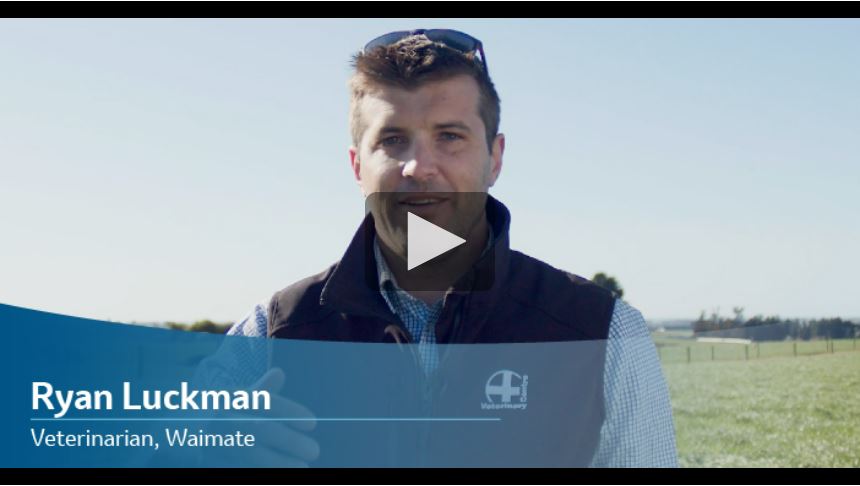


A year with collars – warts and all
Listen in as Mat and Catherine Korteweg break down their first 12 months of using collars on Leneva Farm. To get their full open book account of a year with collars on, including some of the challenges worked through.

Waimate Veterinarian talks about why he backs the Allflex Collar Monitoring system.
Like Waimate Veterinarian Ryan Luckman , we believe the Allflex Collar Monitoring system is the best choice, but we are a bit biased. We know it’s smart to do your research, so to help you compare monitoring solutions equally we have created a comparison chart to guide you in your research.
Mat and Catherine Korteweg are based in South Otago, just out of Balclutha. They are third generation farmers on Mat’s family farm and have been share milking on the property since 2014. The couple calve 550 cows on a 175 hectare platform and also have a 25 hectare silage block a few minutes away.
Their spring calving system starts in early August. The herd is predominantly grass-fed but also has in-shed supplement feeding. The farm has good existing infrastructure with a Protrack(R) draft gate and hub modules.
The couple made the leap and put collars on the herd two years ago. Catherine says it was an important step in their desire to be future focused. “It was Mat’s idea. He’s a big dreamer and a big thinker. We love data and fully utilising it as much as possible. Data plays a day-to-day role in our decision making and our style of operating. Big picture wise, we’re targeting the efficient cow. We’re aiming for live weight production or better, while still protecting fertility. For us, we think of our herd as a group of individuals, ideally we don’t want any passengers, every cow counts and we want them all to be performing.”
The couple are also thinking ahead and looking to reduce their stocking rate. They both know to do this efficiently, while still being profitable, they need every cow to step up performance wise. This is another reason Allflex collars align so well with their farming system.

If this transition process was right and the cows had enough time to recover then we didn’t see that cow again in our health reports. If the transition was rushed she would be popping up again later in the health reports.”
Mat did not expect the rumination data to provide such huge value. He looks at this data every day. “Now with collars I can adjust feeding levels much more frequently. If a cow’s rumination is down over a feed, I’ll top them up at the next one to reduce the impact on the cow and their production. Once cows are dropping production over time, it’s hard to get them back up. We’ve found that if we can reduce how much they drop and get on to it quickly, we can keep them peaking longer.”
Since putting on the collars, the couple have seen some big wins on the board - getting cows at the ideal rumination level prior to going milking twice daily; dealing with pre-mating and trouble cows early; 6 week in-calf rate up, mating up, empty rate down and conception rate up.
Mat found the collars gave him much more flexibility during mating. “Having the heat information right in front of your eyes really gives you the motivation to maximise it.” Also, the collars were really important in their use of sexed semen because they could pinpoint the timing of insemination for that semen to avoid wastage and maximise the chance of conception. The ideal insemination window is narrower for sexed semen, especially frozen so, without this data from the collars, wastage is likely to be much higher.
Both Mat and Catherine trust the collars implicitly for picking cows on heat. What has also become obvious is the collars have generated a substantial number of smaller gains across their whole farming operation. Together, these smaller gains have added up to noticeably big gains in milk production.
For more information on Mat and Catherine’s farming operation and a detailed presentation on their first 12 months with Allflex Monitoring Collars visit 12 Months Form - Allflex Livestock Intelligence New Zealand.
Or to speak to your local Allflex Monitoring Sales Specialist visit www.allflex.co.nz/abo ut-us/meet-the-team/
Copyright © 2023 Merck & Co., Inc., Rahway, NJ, USA and its affiliates. All rights reserved - NZ-NON230300015


